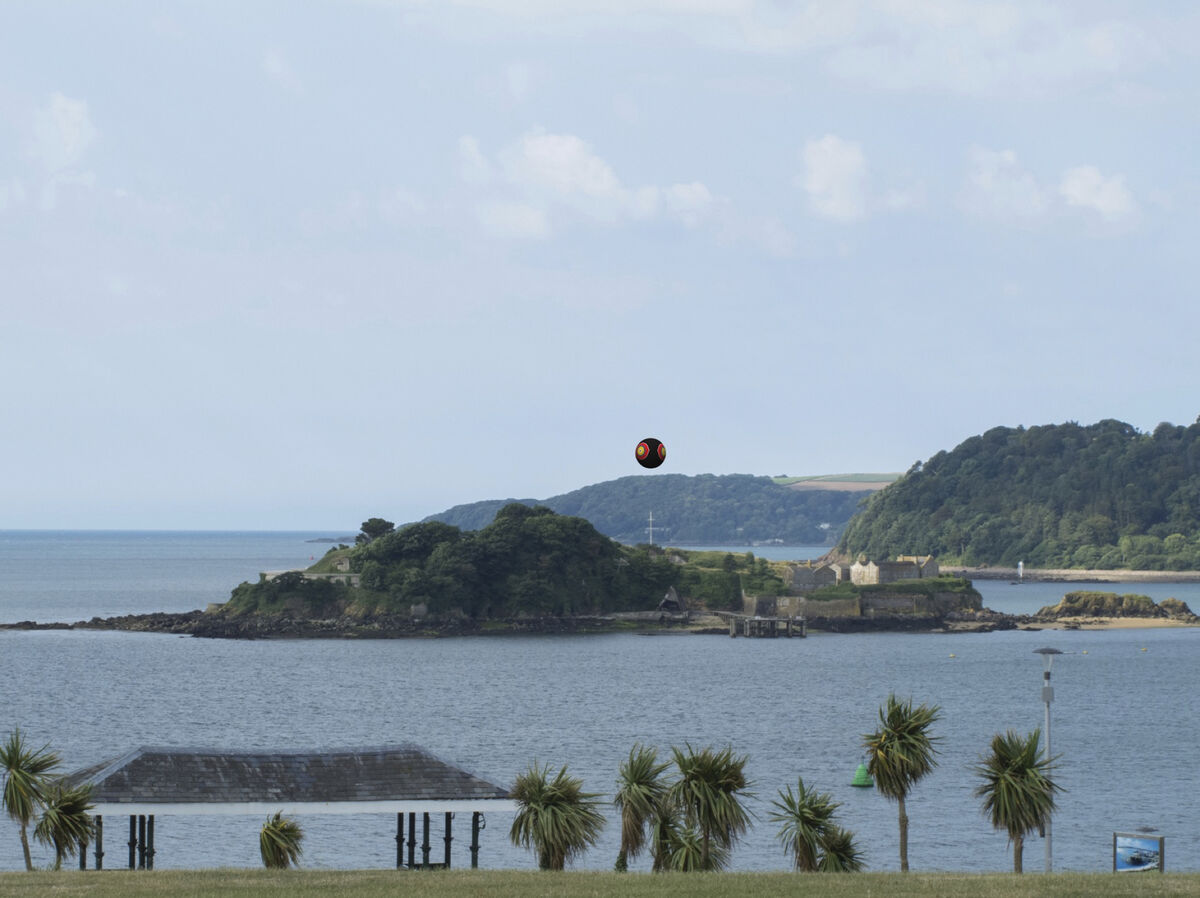
Postcommodity
The Atlantic Project: Repellent Eye follows on from your previous project Repellent Fence, a land art installation and community engagement project along the US/Mexico border. What triggered the concept of this project?
Postcommodity: For The Atlantic Project, Postcommodity proposed a work titled Repellent Eye (Plymouth). Our proposal was situated in relationship to Repellent Fence, but more specifically, Repellent Eye (Plymouth) helps form a small body of work in conjunction with Repellent Eye Over Phoenix, and Repellent Eye (Winnipeg). Within this body, each work of art can be described as a large-scale singular repellent or scare eye balloon positioned in a place of historical, political, and economic complexity where social narratives are contested. Each place provides a context that changes the discursive function of the balloon as a generative metaphor of accountability and awareness. A scare eye balloon is a beach ball size consumer bird repellent product that can be purchased at a hardware store. The failure of its design helped trigger our vision, which was to hack and re-adapt the balloon for a more effective purpose. Another factor that inspired us is that the balloon coincidently uses colours considered to be sacred to indigenous peoples throughout the Americas, and it also uses a graphic that is uncannily similar to an iconography shared among indigenous peoples of the Americas from South America to Canada. These factors inspired us to envision large-scale versions of the consumer bird-repellent balloon as an indigenous ready-made. By hacking, reclaiming and repurposing this balloon and its iconography, we have found an effective purpose for its design — which is to leverage its presence to connect narratives of indigenous self-determination to diverse publics.
TAP: How is this concept transferred to Drakes Island in Plymouth?
Postcommodity: There have existed the presence of powerful colonial narratives and systems in all places that Postcommodity has flown Repellent Eye balloons. Our proposal for Drakes Island represents a strongly legible relationship to our previous work, considering place as a historical marker, we are flying a Repellent Eye at a site of embarkation — a place where those known as “the pilgrims” departed on the Mayflower for the Americas. Although this is a narrative celebrated by colonizers as a historic achievement, from Postcommodity’s indigenous perspective it marks one of the greatest black eyes of European history. Drakes Island is replete with colonizer narratives ranging from the Pilgrims to Captain James Cook. Everywhere these narratives traveled and were reified throughout the Americas, the death and genocide of the Western Hemisphere’s indigenous peoples proceeded. For Plymouth, we propose a black balloon with a conscientious eye to complicate and extend a new local and global public memory of a place from which criminals and extremists (cast as explorers and God’s chosen) departed England to map and make America — a patchwork quilt of destructive dreams and global power fueled by judeo-christian western scientific ideology, capitalism, speed, and the ongoing colonization of indigenous peoples.
TAP: Are there plans for this project to continue to develop after The Atlantic Project?
Postcommodity: Perhaps we will consider the possibility of flying a Repellent Eye should another interesting opportunity arise.
TAP: What are the biggest challenges you're facing in bringing Repellent Eye to Drakes Island?
Postcommodity: We are facing challenges associated to the cost and manufacture of the Repellent Eye balloon for Drakes Island. This particular balloon will be the largest balloon we have constructed to date.
TAP: Is this your first time in Plymouth, UK?
Postcommodity: Yes, this will be the first time we visit Plymouth, UK, yet we have experienced its colonial legacy all our lives.
---
Postcommodity is a Southwest Native American Artist collective, founded in 2007. Current members are Cristóbal Martínez and Kade L. Twist. Former members include Raven Chacon (2009-2018), Steve Yazzie (2007-2010) and Nathan Young (2007-2015).